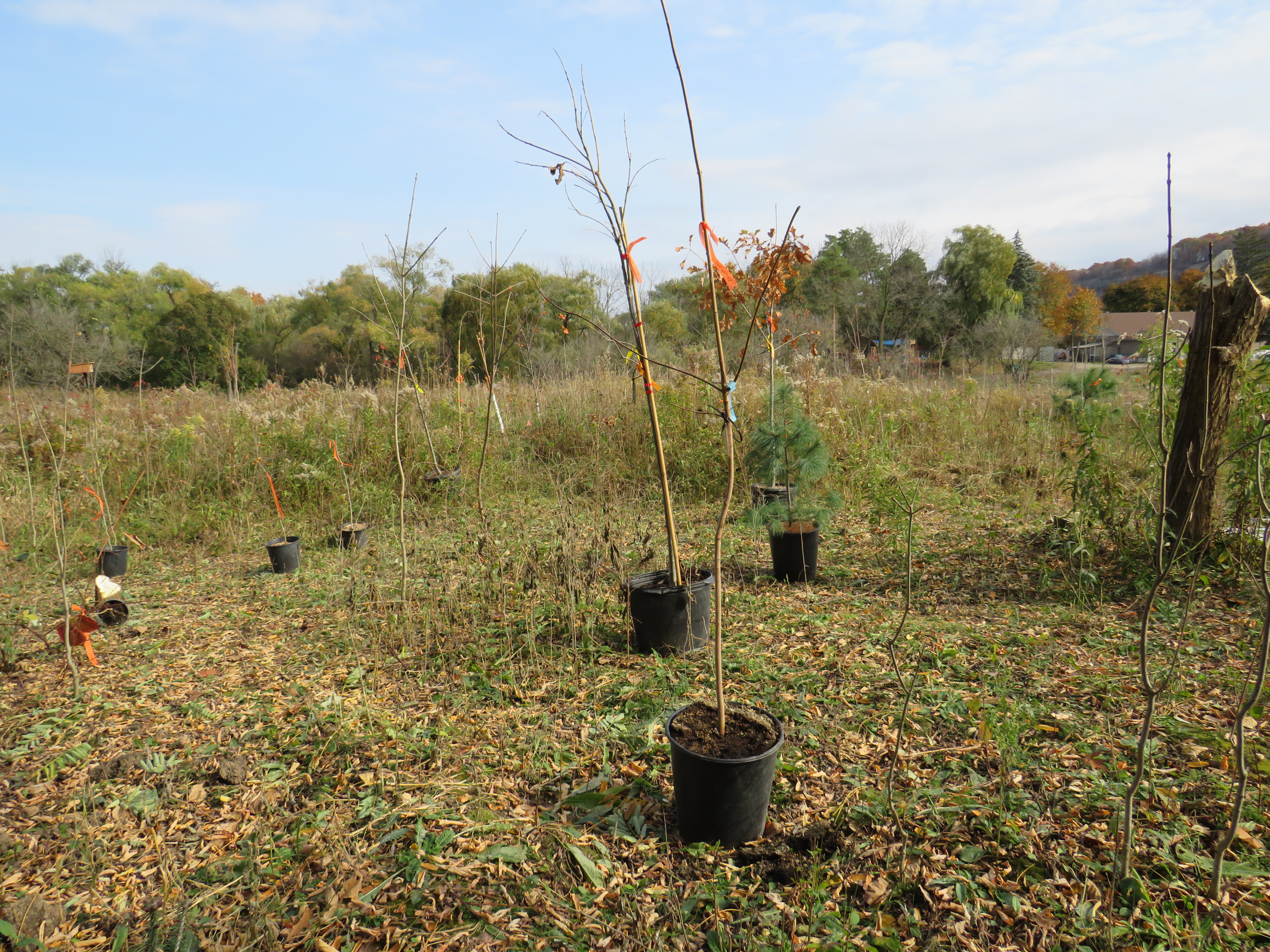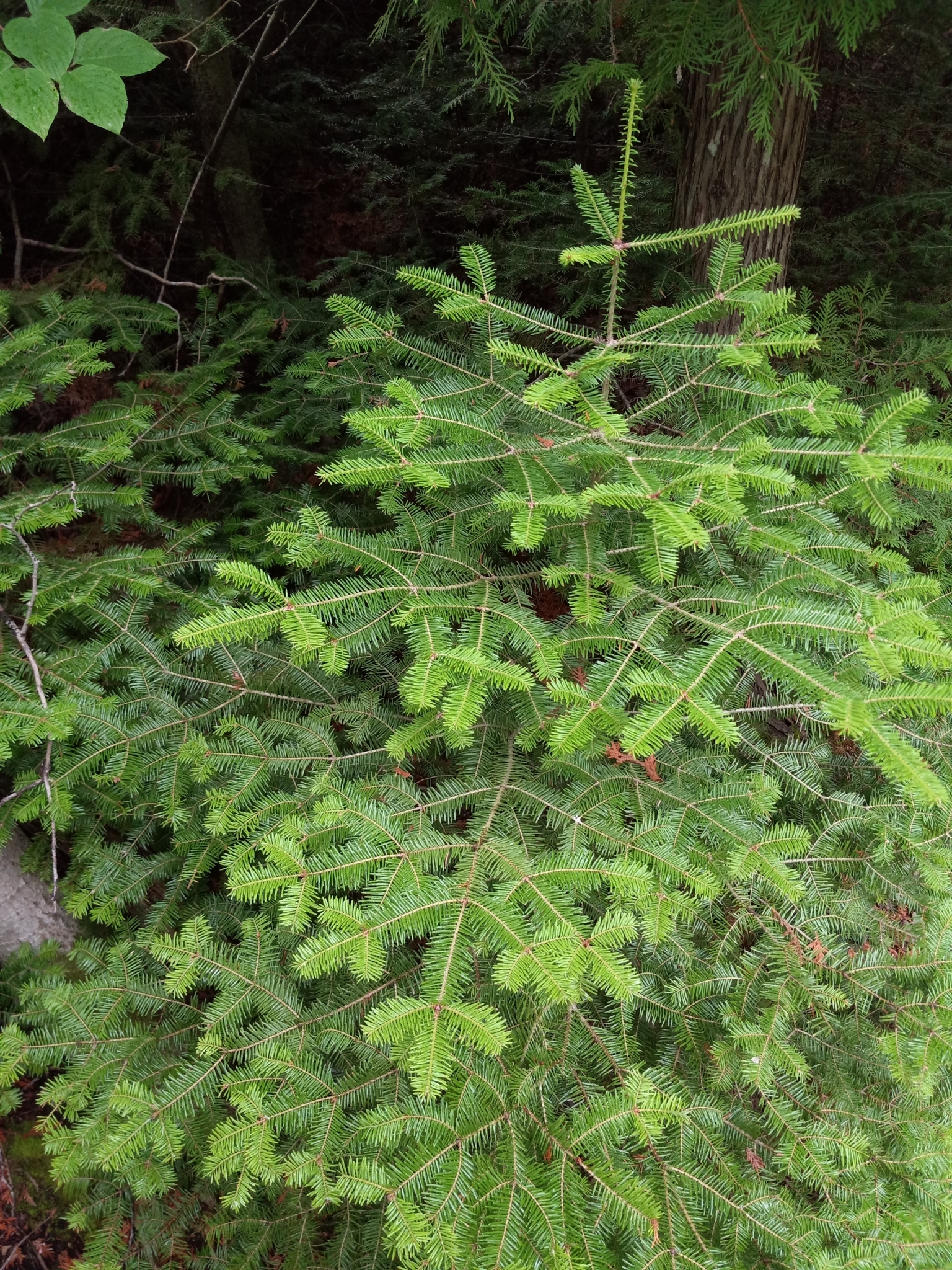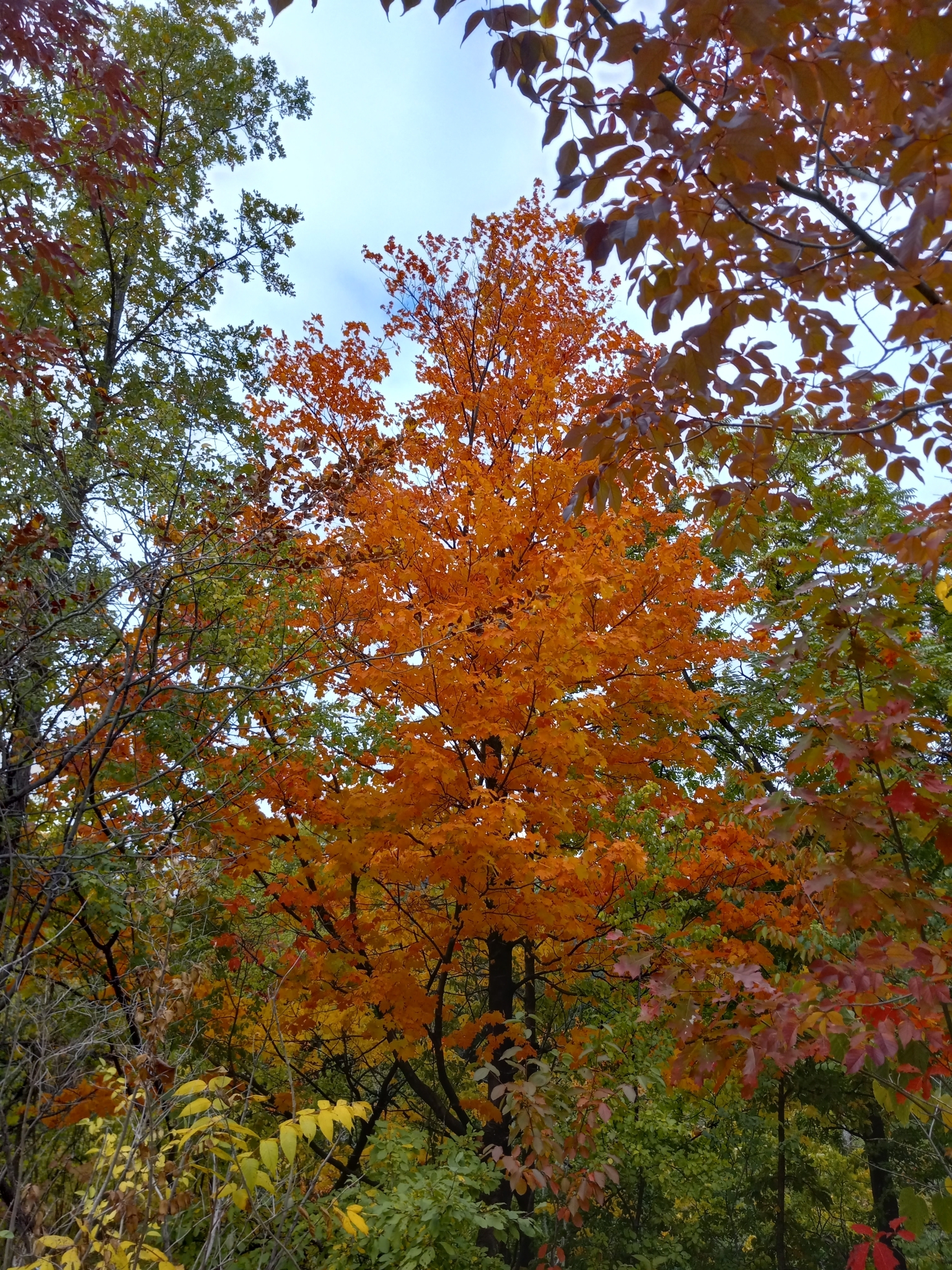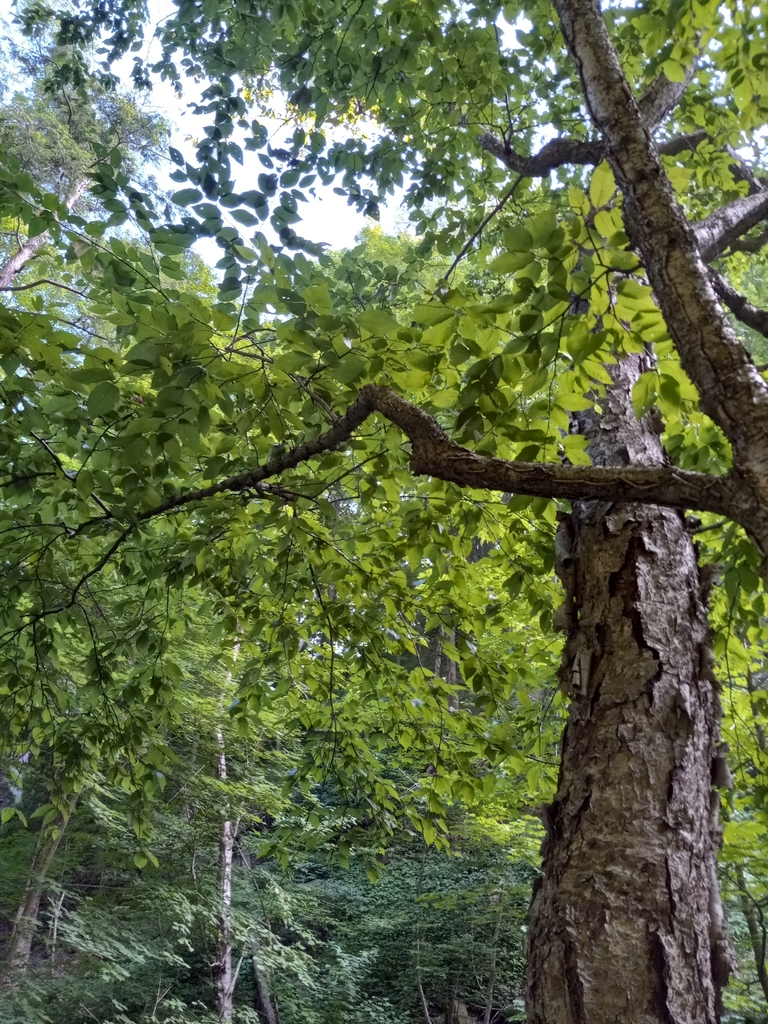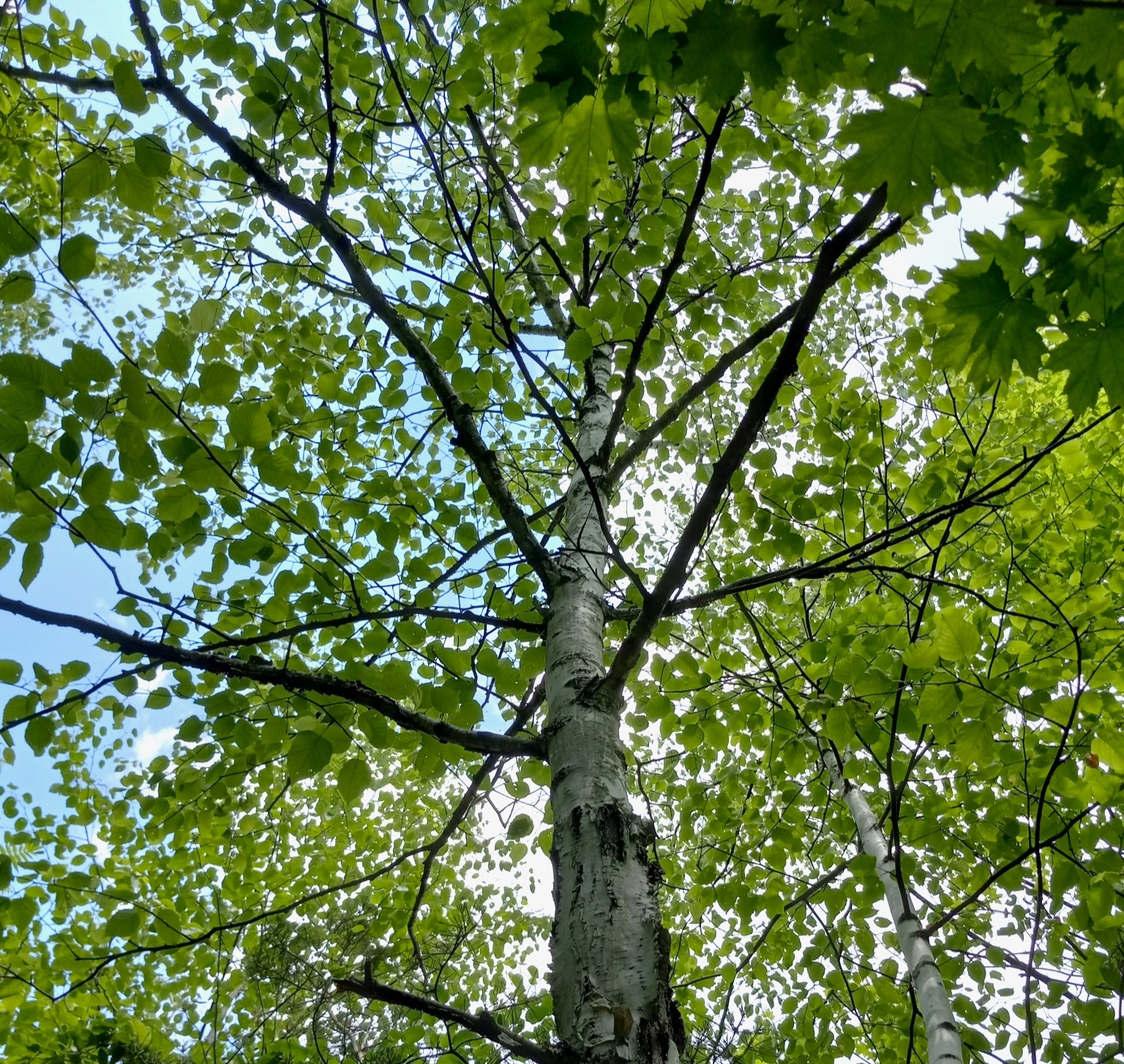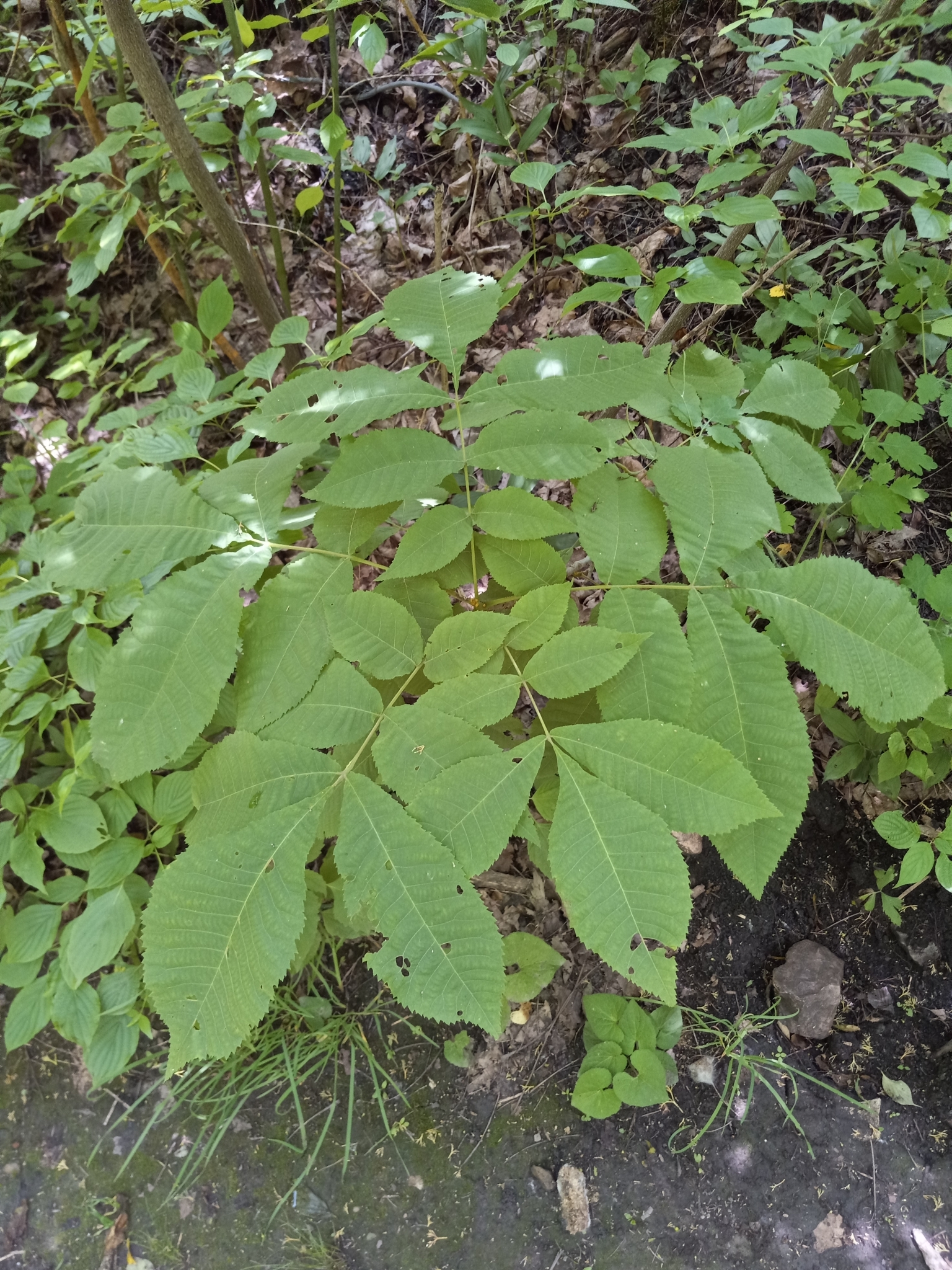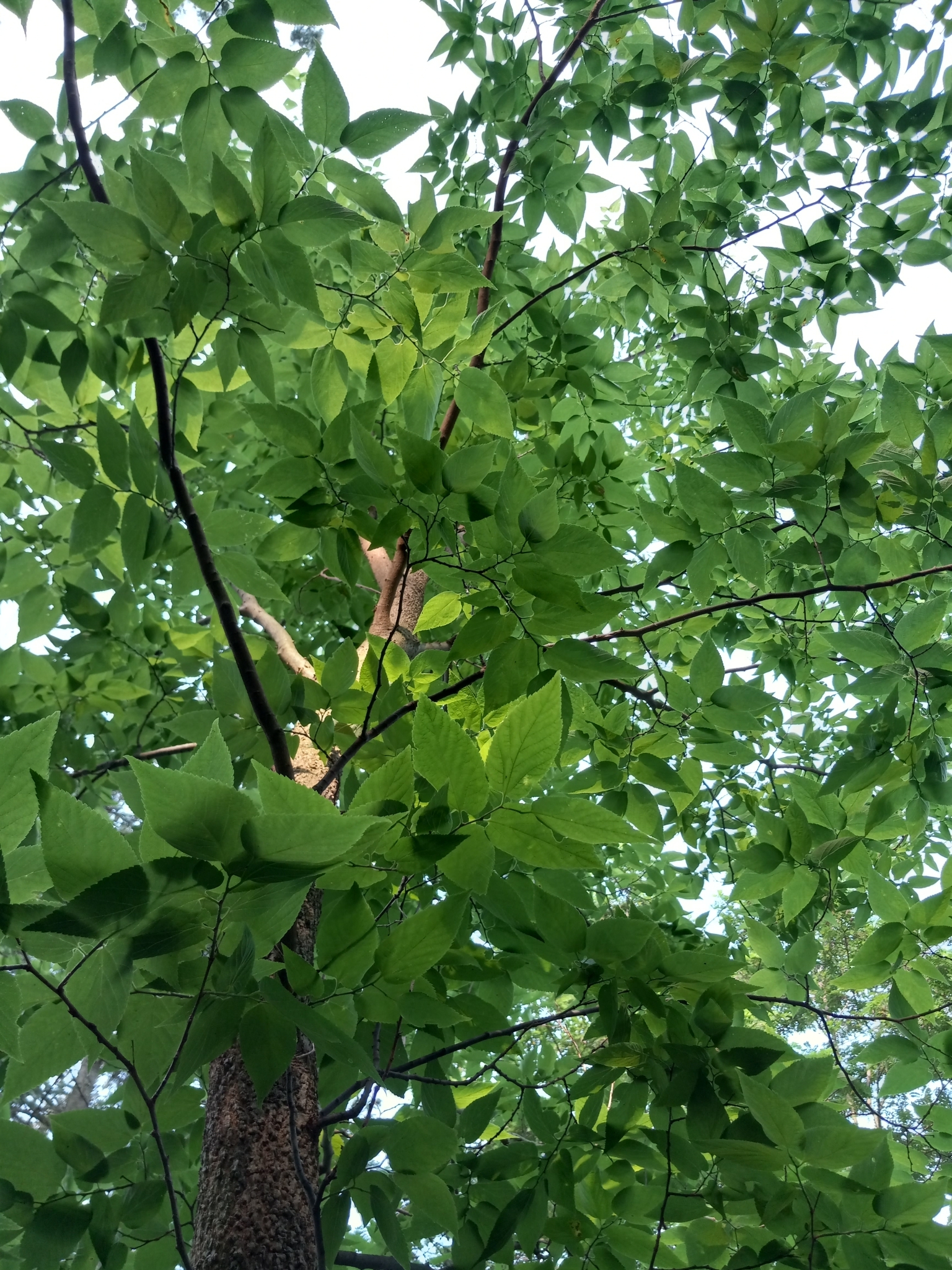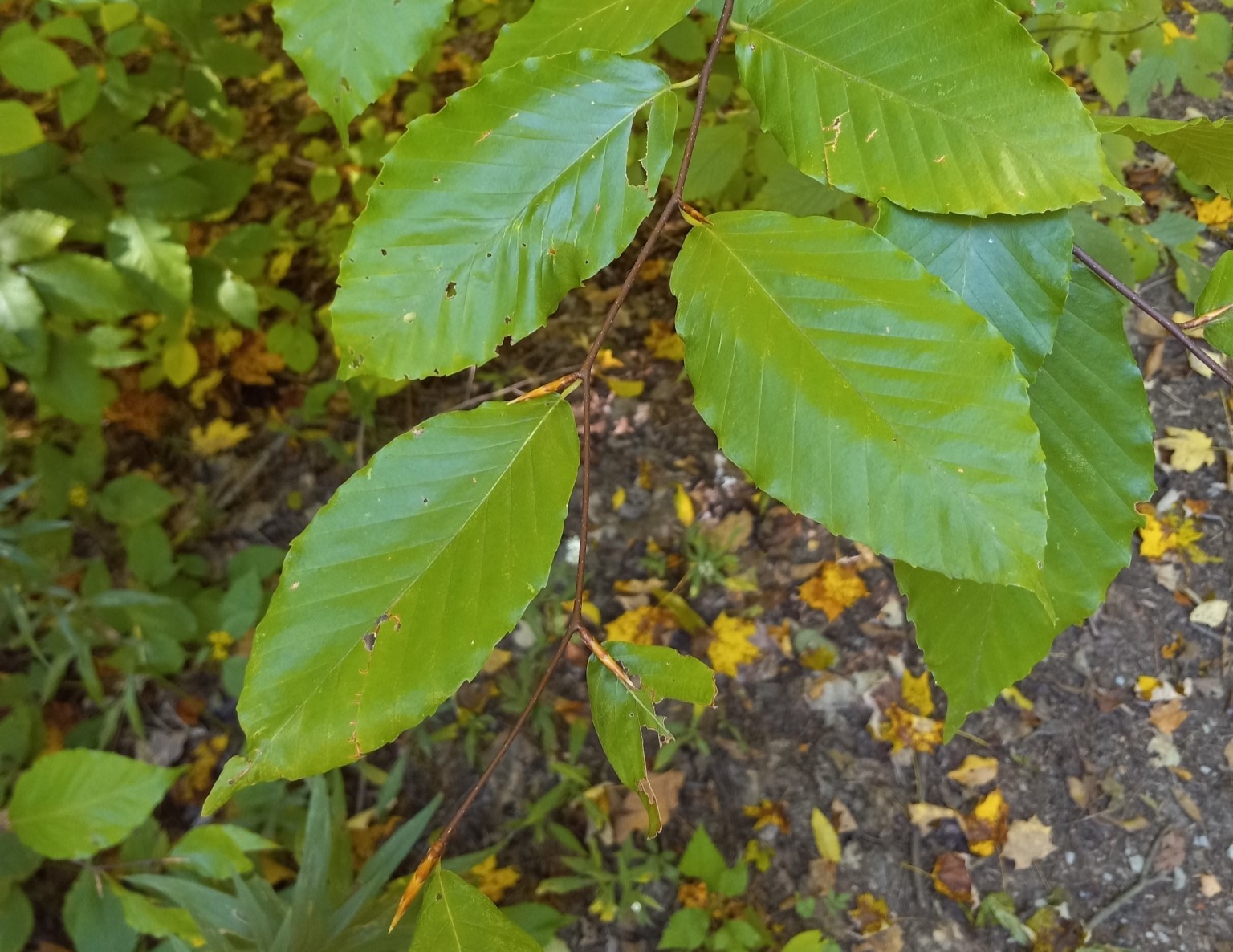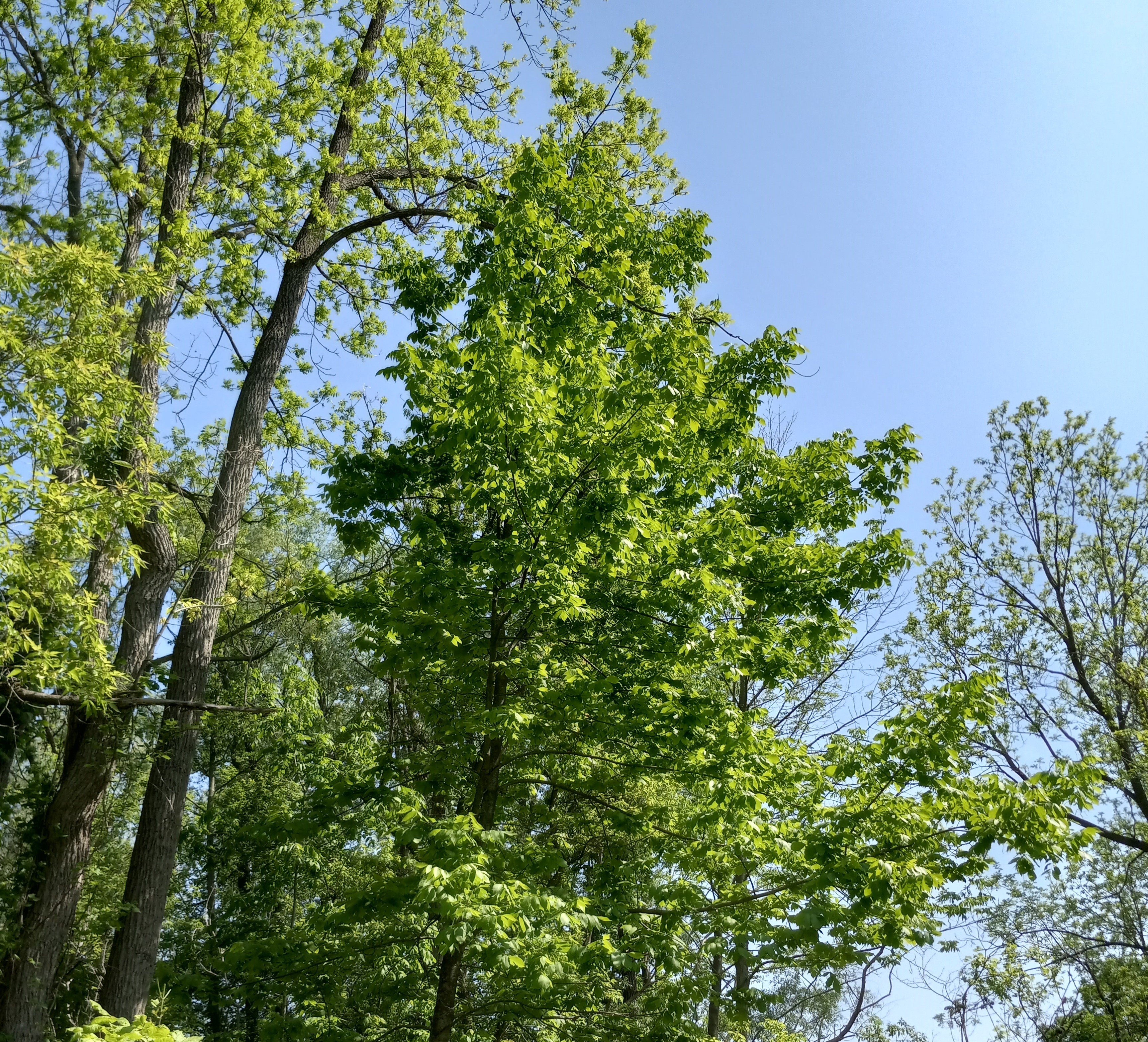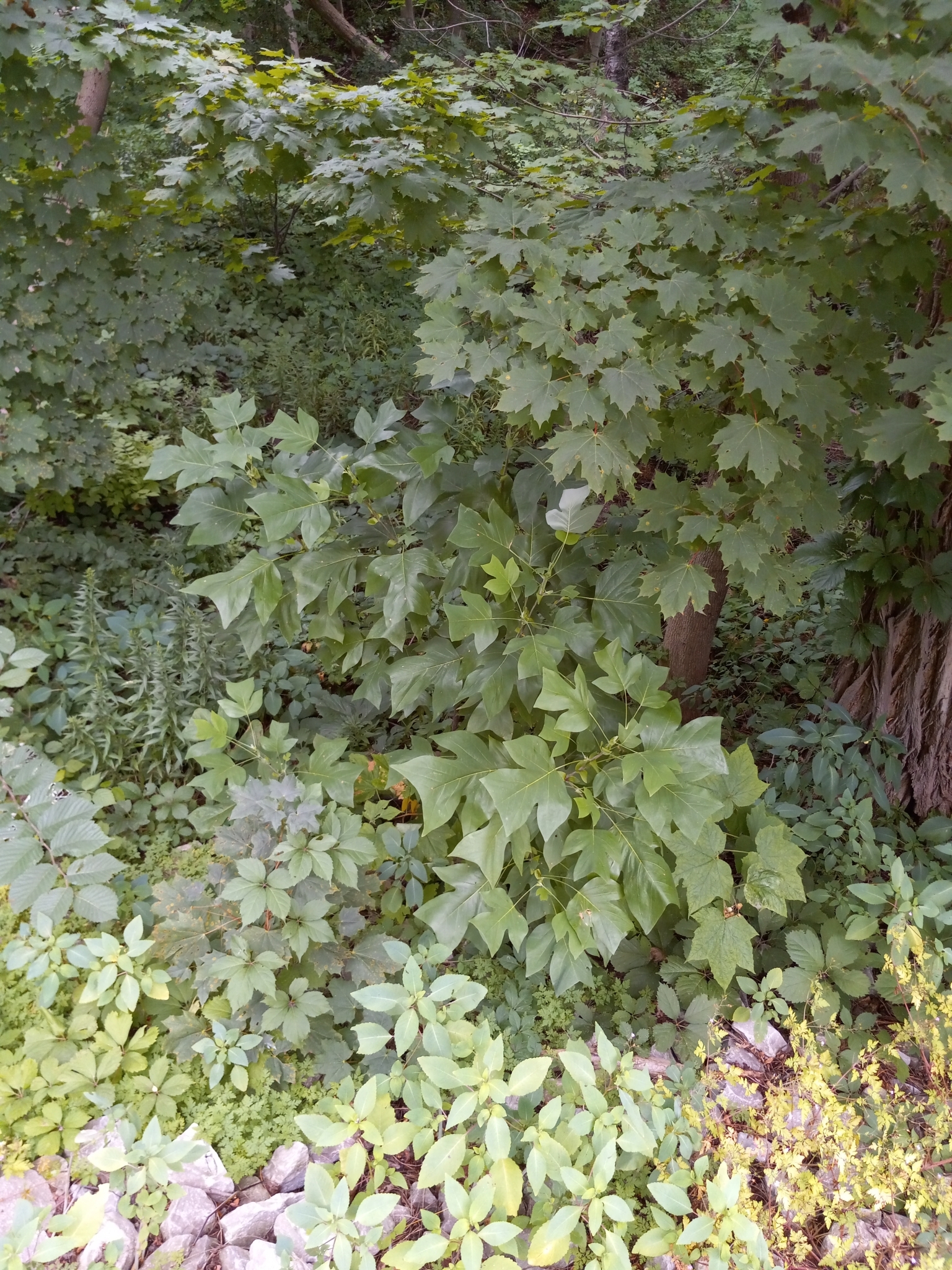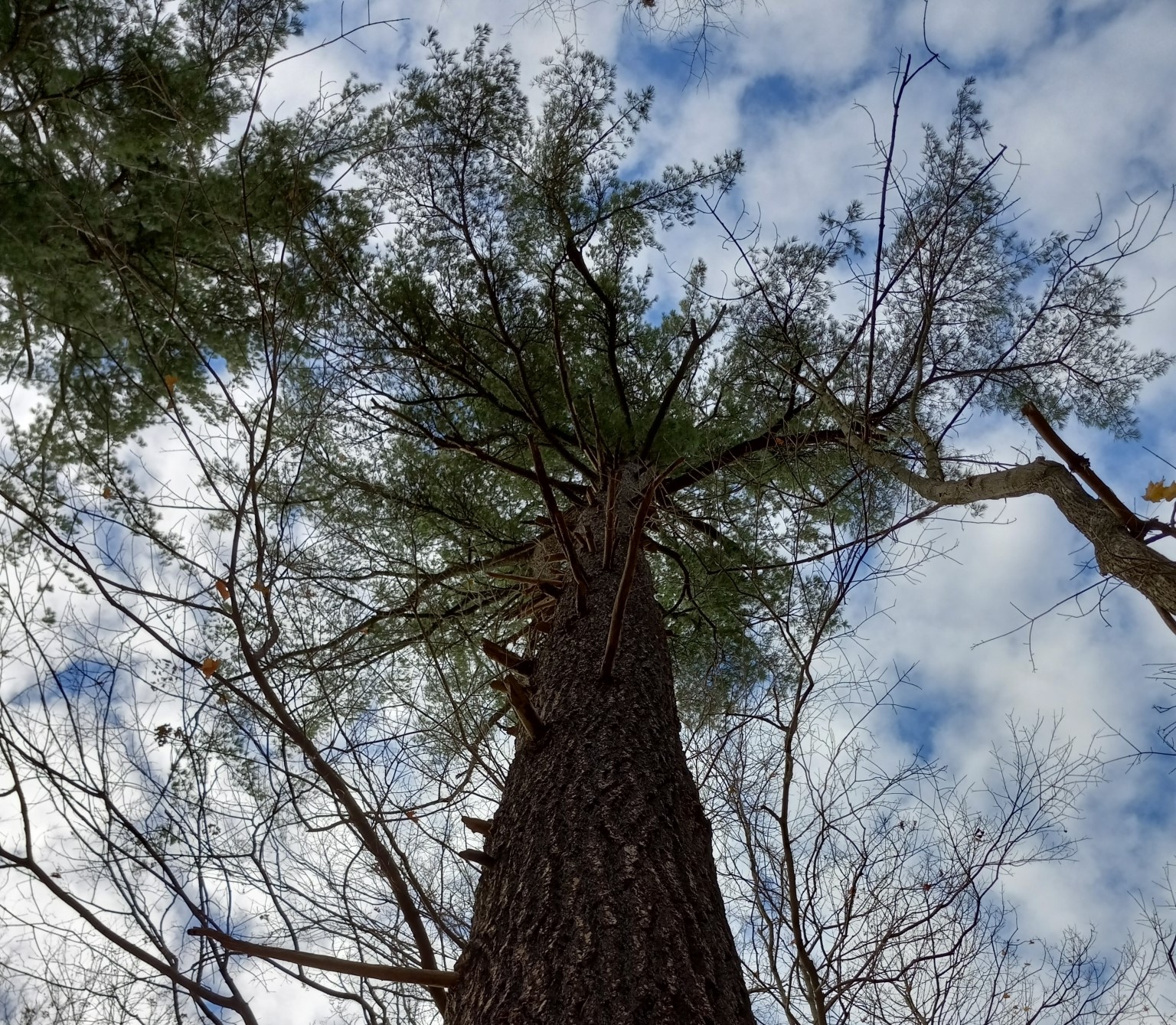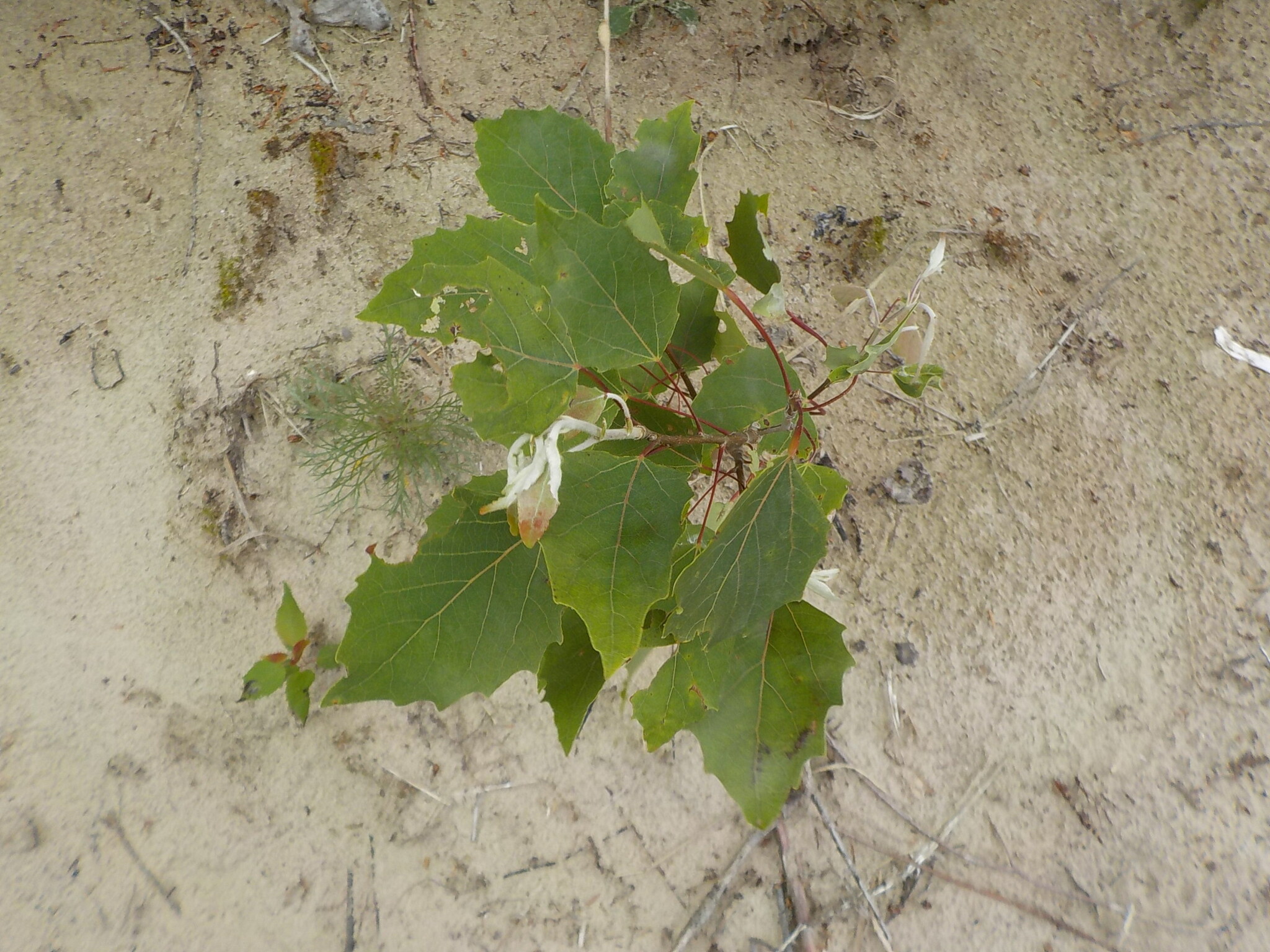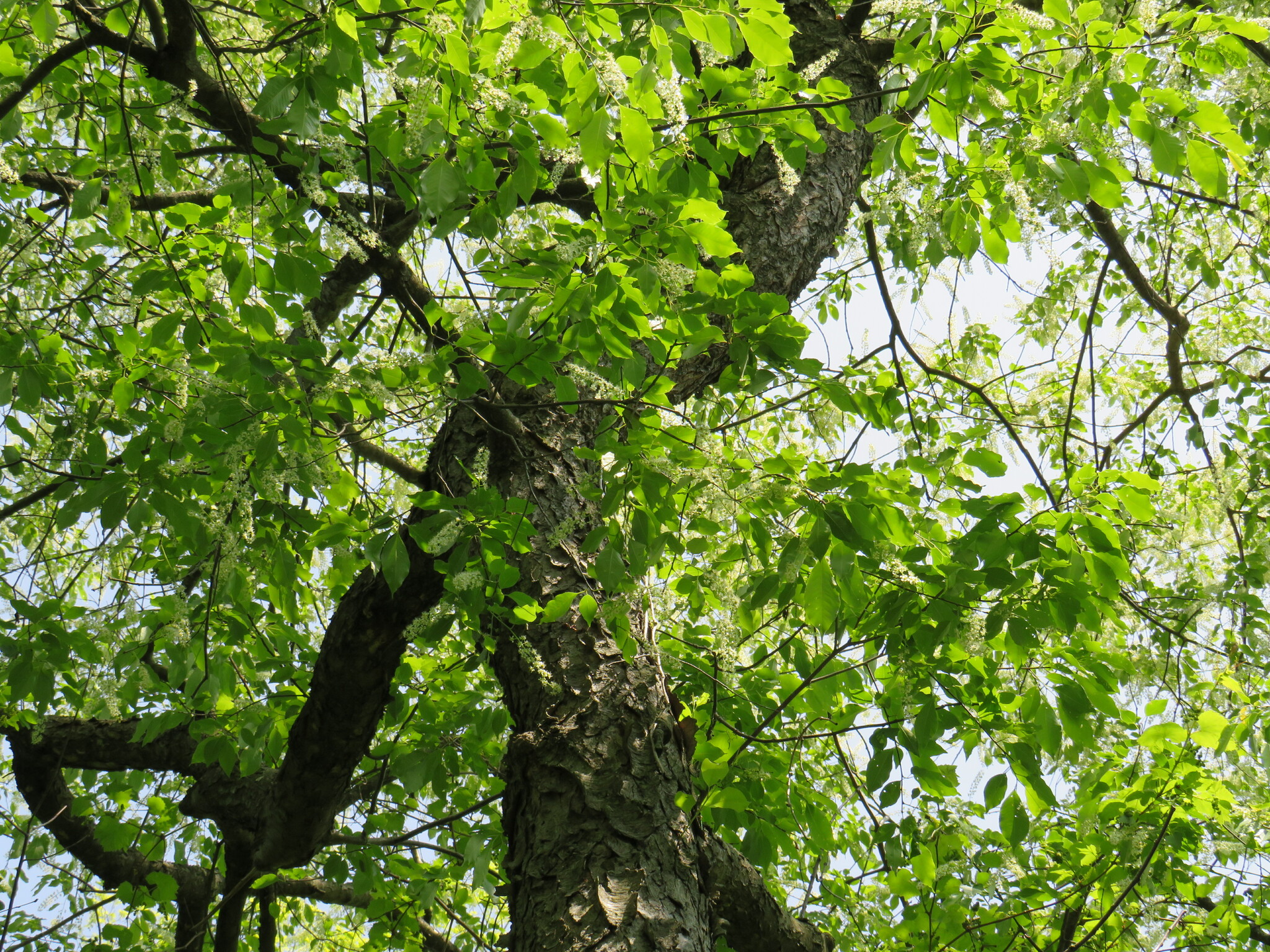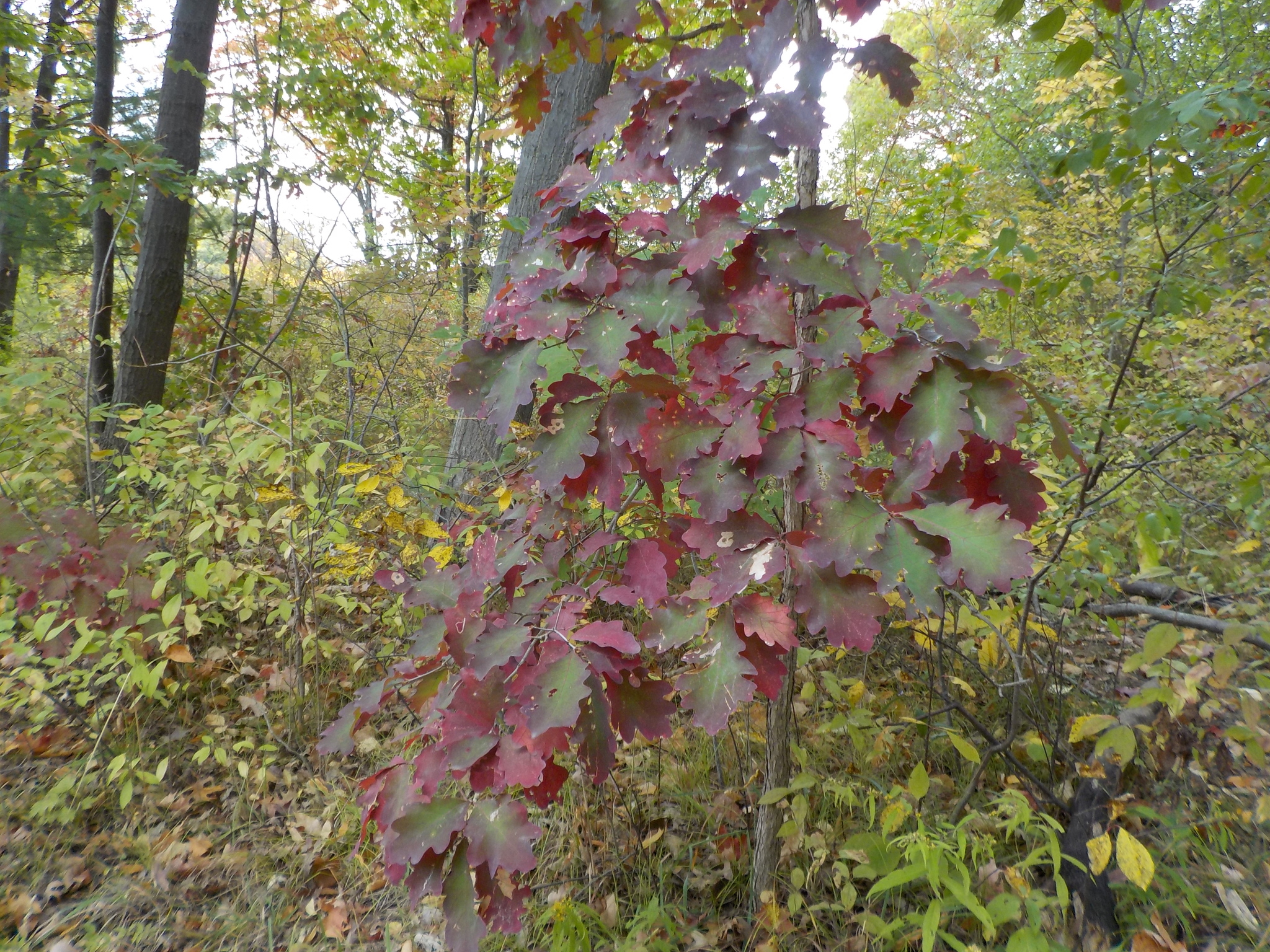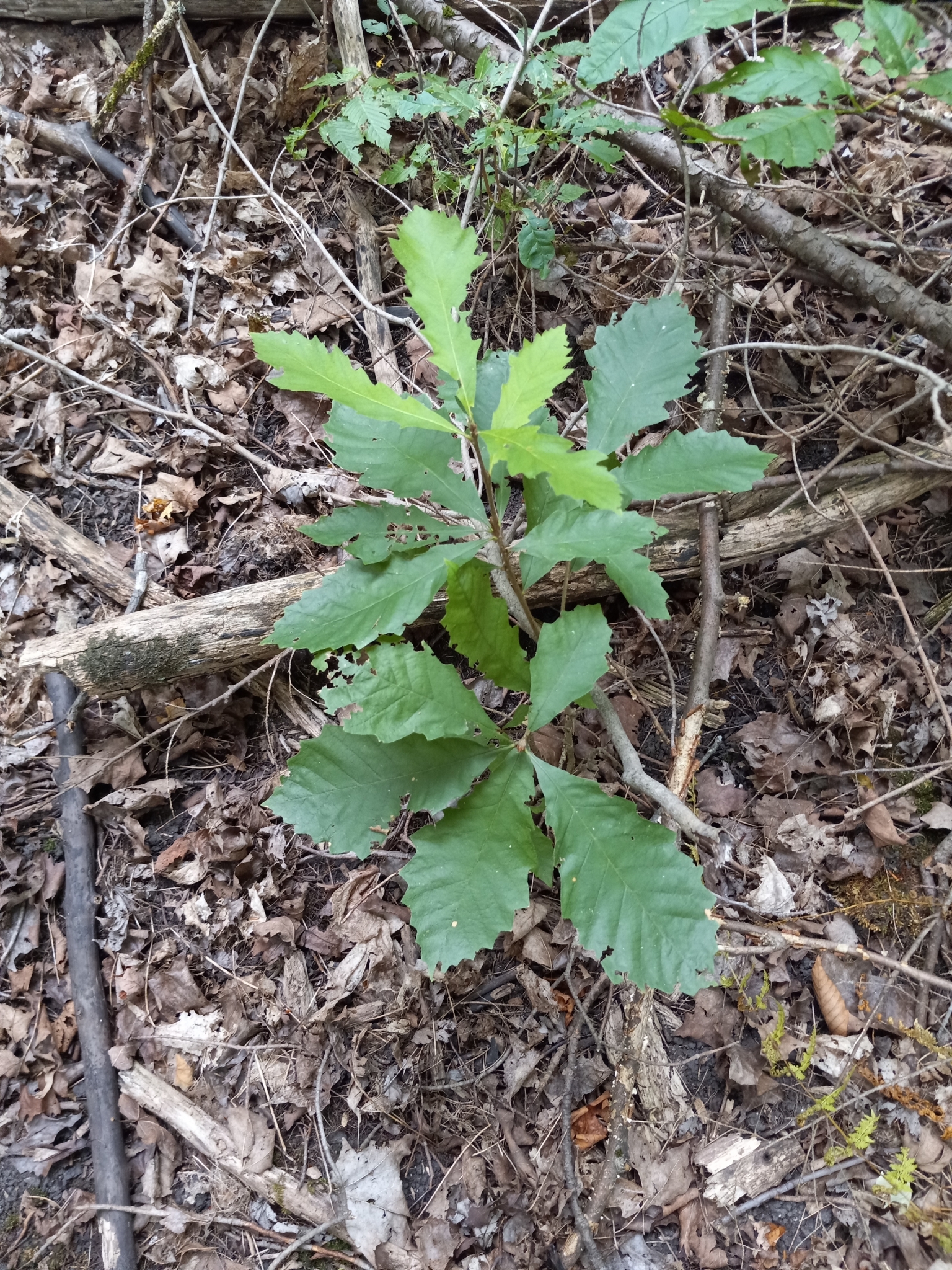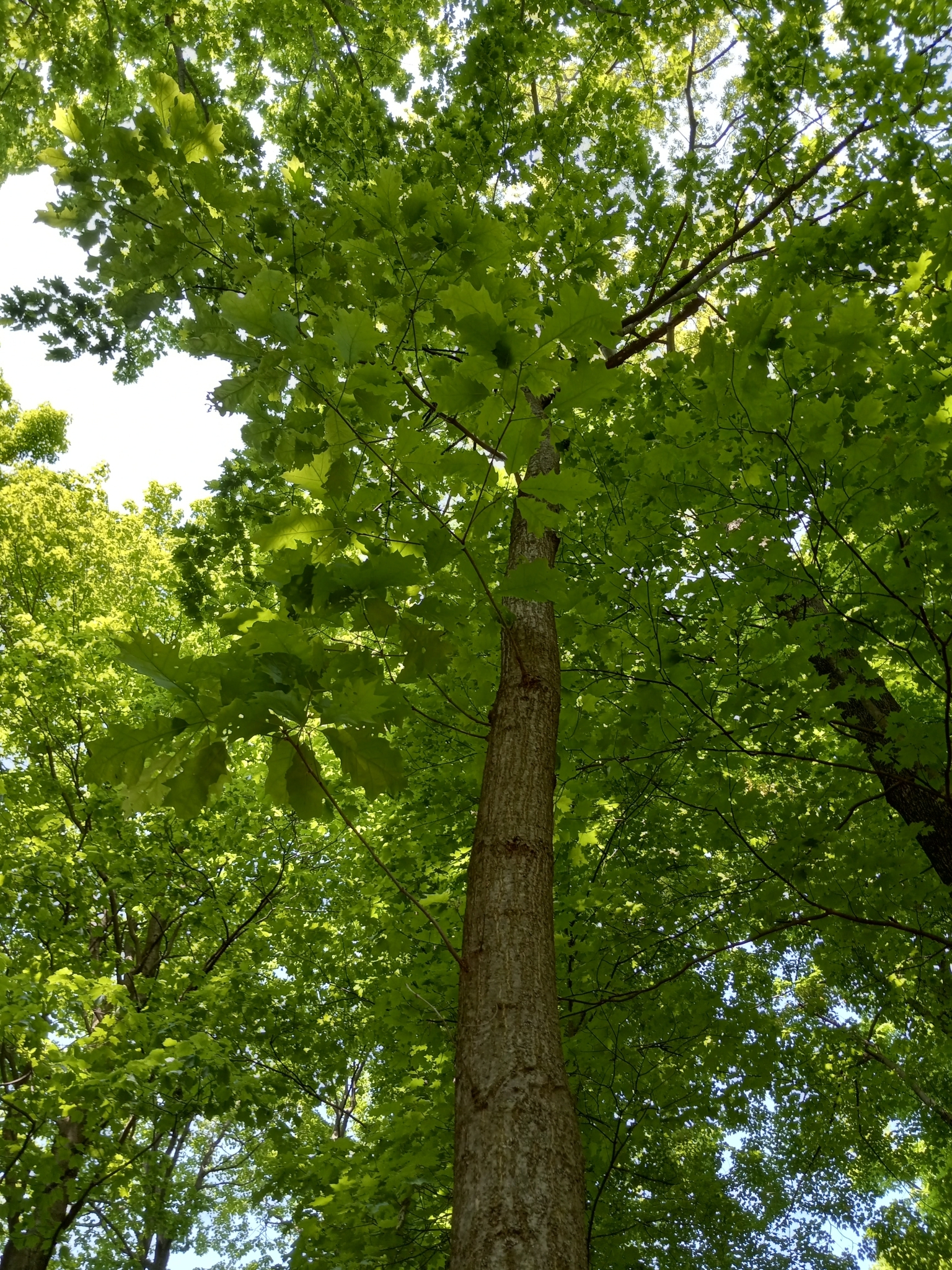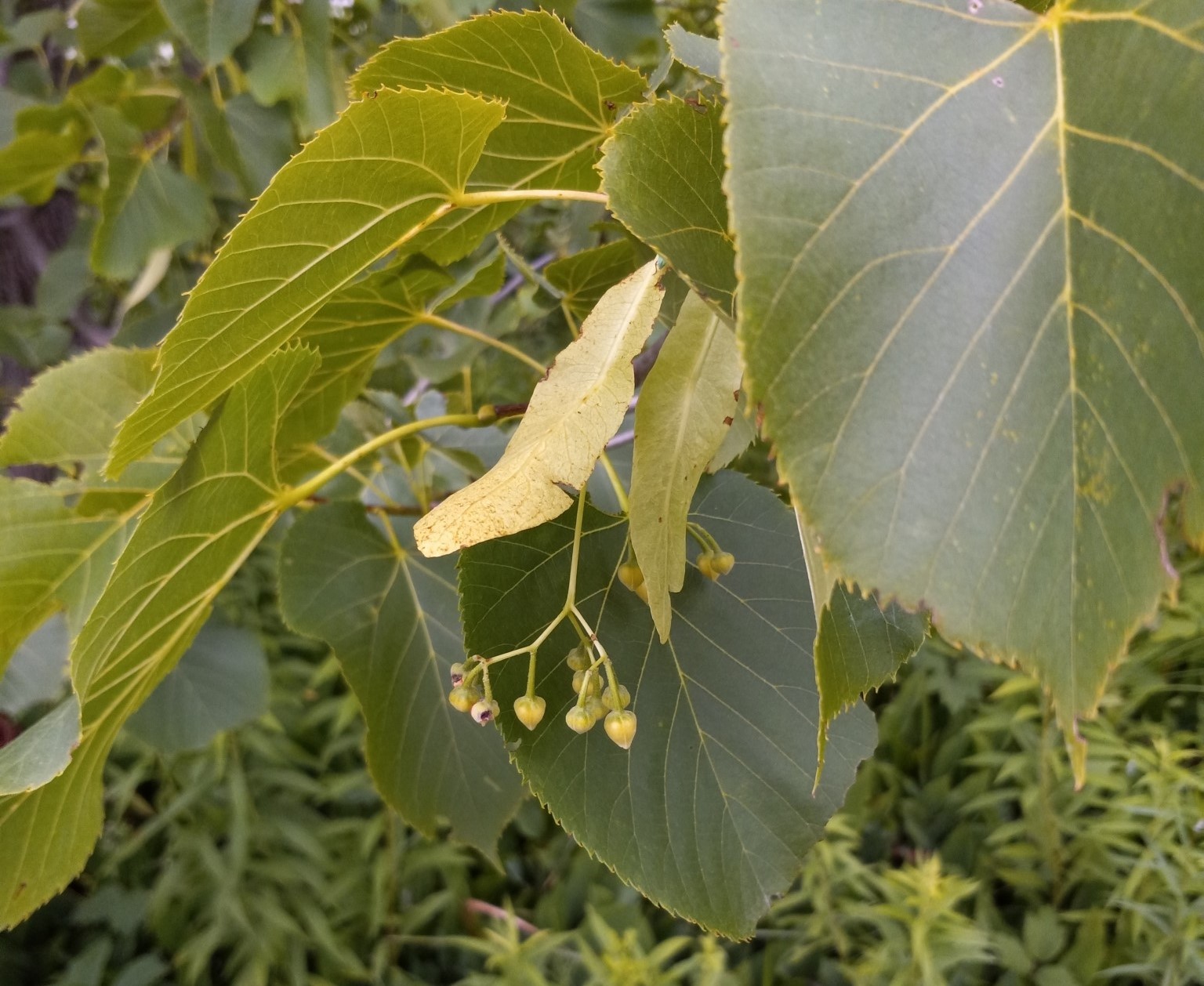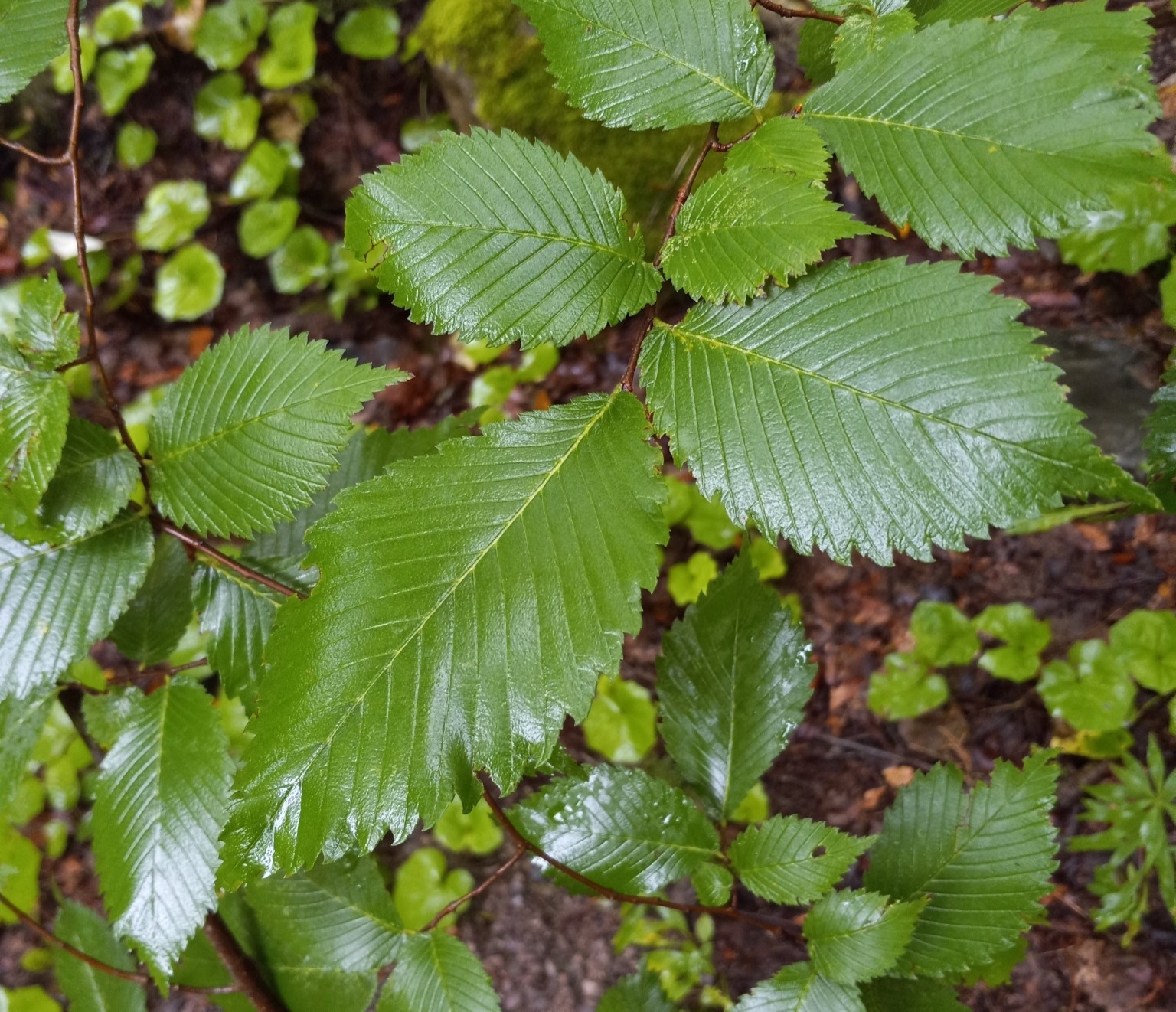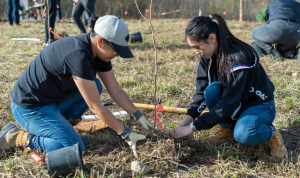
What is the McMaster Carbon Sink Forest?
The McMaster Carbon Sink Forest is a “model forest”, meant to replicate a natural Carolinian forest ecosystem. It is located on a one-hectare plot next to McMaster Forest in West Hamilton. The McMaster Carbon Sink Forest is now home to approximately 1000 individual trees, representing 20 (planted) & 5 (spontaneous) native and climate-resilient species. This “model forest” will provide many research opportunities, allowing researchers to track the growth of trees and the development of the forest ecosystem over time. Future projects will measure how much carbon a diverse selection of native tree species absorb as they grow. Additionally, this forest ecosystem will support biodiversity and conservation in Hamilton, as it provides more healthy habitat for native species in the McMaster Forest area.
Planting at the McMaster Carbon Sink Forest began on November 6, 2021, when volunteers planted 250 trees. Further plantings occurred on April 22, 2022, November 5, 2022, and April 22, 2023. Planting was concluded by staff and volunteers over Fall of 2023.
While planting at the McMaster Carbon Sink Forest has concluded, there is still lots to be done. Staff will continue to ensure the health and survival of the trees as they grow. Additionally, there are on-going construction projects to build research infrastructure on-site. This infrastructure will allow McMaster students and faculty to gain important data about the carbon fixing potential of our biodiverse forest ecosystems. This includes the construction of an eddy covariance flux tower, which will provide data on the amounts of carbon, water, and solar radiation being absorbed, released, and reflected by the McMaster Carbon Sink Forest. Nature at McMaster continues to collaborate with the McMaster Centre for Climate Change on research at the McMaster Carbon Sink Forest.
(Derived from the McMaster Centre for Climate Change website)
What is a Carbon Sink?
Carbon sinks are natural areas that absorb more carbon than they release. Ecosystems absorb and release carbon through a variety of pathways and in a variety of forms. Forests absorb carbon dioxide from the atmosphere through photosynthesis as plants grow and use that carbon to produce leaves, roots, and stems. Plants are also a source of carbon, as they release carbon dioxide to the atmosphere during cellular respiration. However, most living plants absorb more carbon than they release. When animals and fungi feed on plants, they also store some of the carbon contained in plant matter in their own bodies. Forests also store carbon as organic matter in the soil, and release carbon to the atmosphere through processes like decomposition and fire. Thus, carbon circulates between the atmosphere, organisms, and other carbon reservoirs like fossil fuels and oceans in a global Carbon Cycle. Any ecosystem that absorbs more carbon from the atmosphere than it releases to the atmosphere over a long period of time is called a carbon sink. Most healthy forests are carbon sinks, and so protecting and planting forests can help mitigate climate change by directly removing carbon dioxide from the atmosphere.
What’s Growing at the McMaster Carbon Sink Forest?
The McMaster Carbon Sink Forest is home to 25 native species of trees. Click on each species to learn more!
Information Box Group
Collaborators & Landowner Appreciation
This project is in collaboration with McMaster and community organizations, including:
- Nature at McMaster
- Trees for Hamilton
- McMaster Centre for Climate Change
- McMaster Academic Sustainability Programs Office
Nature at McMaster would like to thank and acknowledge Mark Tamminga and Bill Walker for their help and assistance with this project. Their generosity in allowing their property to be used for the development of a carbon sink forest and research is greatly appreciated by McMaster University.
Additional funding and support for this project was provided by:
- Trees for Life Canada
- Parks Canada’s National Program for Ecological Corridors
- McMaster Office of Sustainability
- McMaster Grounds
- McMaster Office of the President
- McMaster Hydrometeorology & Climatology Group

